Where did we park? History in Pictures
By Simon Miller, Library Technician, State Library of Queensland | 22 November 2016
In the earliest decades of the 20th century car parking was simply a matter of leaving your car where you happened to stop. Rarely in the years before the First World War would you have found more than a few cars parked together.
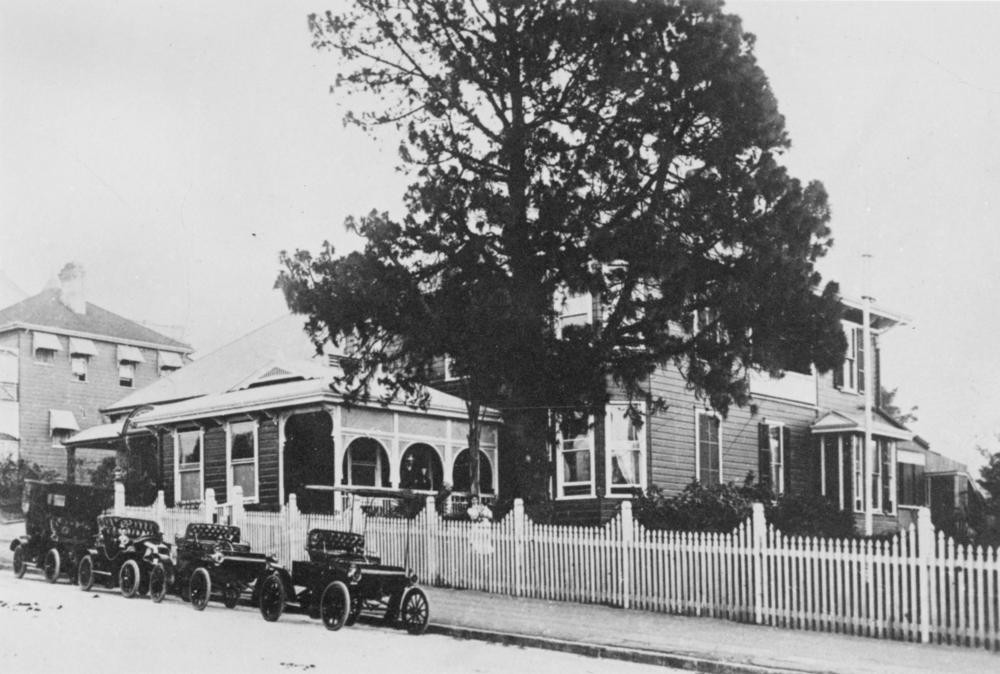
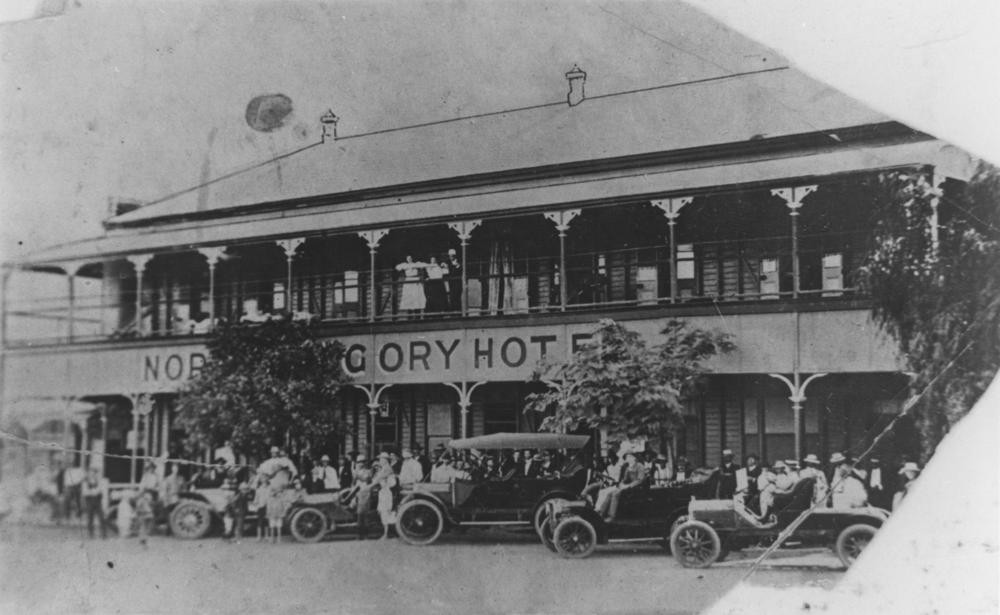
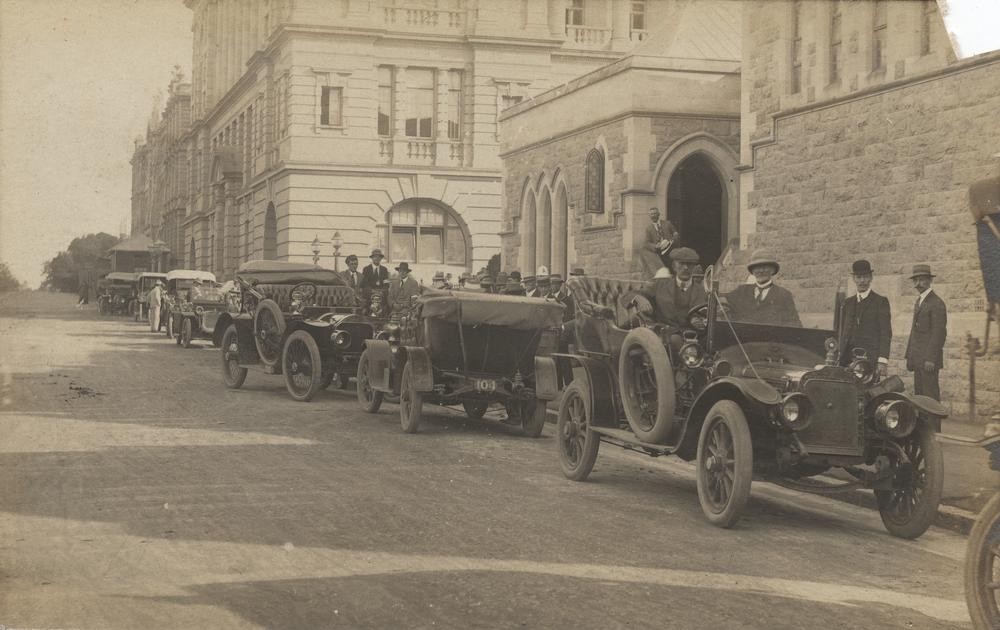
Cars aligned in a street outside the Criminal Investigation Bureau for the General Strike in Brisbane, 1912, John Oxley Library, State Library of Queensland Image number: 10113-0001-0008
By the middle of the 1920s car parking had become a serious problem in Brisbane, at least. Lord Mayor, William Jolly, addressed the problem at a dinner of the Motor Traders' Association reported in the Brisbane Courier in 1925.
"I feel sure that in Brisbane in the very near future we shall have to take some action with a view to finding some better system of parking motor cars," said Alderman W. A. Jolly (Mayor of Greater Brisbane) at the ninth annual dinner of the Motor Traders' Association of Queensland held at Finney's Roof Garden last night. Alderman Jolly … said that the rapid development of the motor trade in Brisbane had handed over to the city of Brisbane the great problem of the parking of motor cars. Every big city in the world was faced with that problem. He felt sure that in Brisbane in the very near future they would have to take some action with a view to finding some better system of parking motor cars. To-day their main streets were reduced to half their width owing to the lack of a parking system. Every large building that went up in the thickly populated parts of the city made matters worse. An important phase of the provision of car parking would be the selection of sites. They would have to be careful to see that such sites were properly situated.
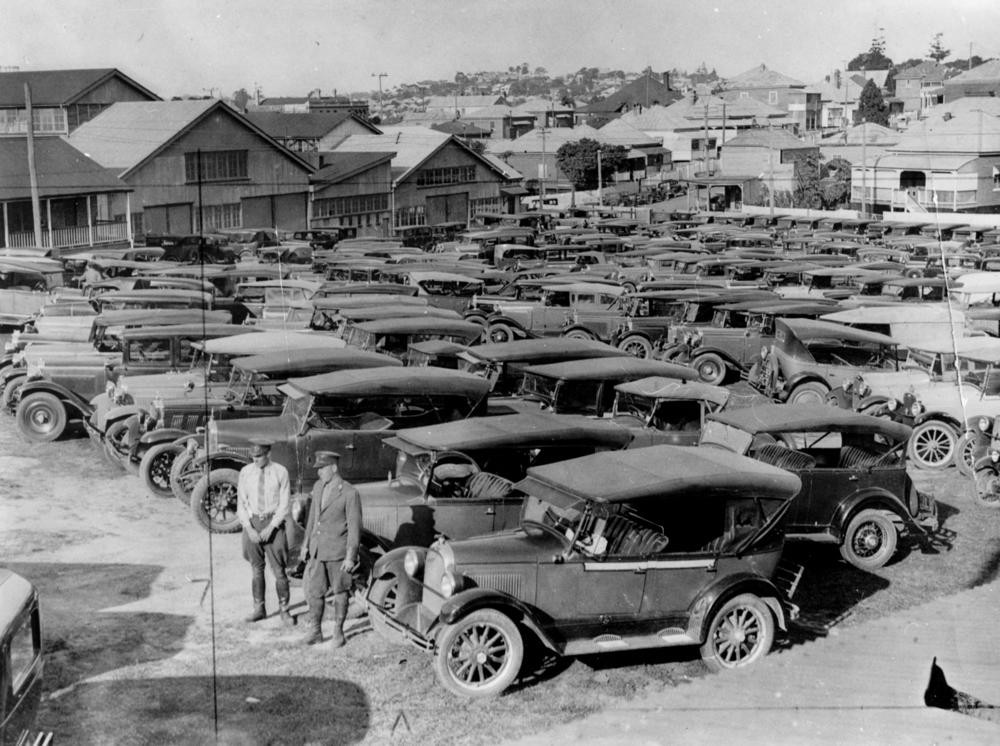
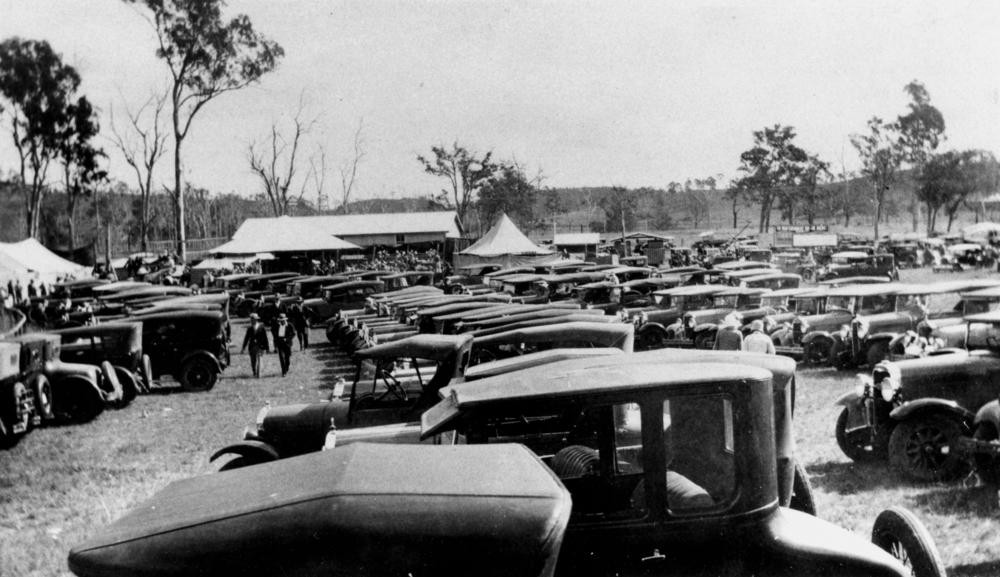
Carpark at the Goomeri Showground, ca. 1927, John Oxley Library, State Library of Queensland Neg: 149725
By the 1930s formal parking arrangements were instituted in many towns as cars became more common. The state's car parks began to take on a different look as hard topped 1930s vehicles replaced the 1920s soft top models. The expansion of the motor industry was highlighted in this report from Ayr in The Northern Miner, July 30, 1932.
The value of the sugar districts to the motor car Industry was abundantly demonstrated here during show week. The Traffic Inspector, Mr. J. O'Connor Informs me that on Saturday night, while the different entertainments in town were in progress he made a count of the cars parked in a limited area around the centre blocks and counted no less than 479.
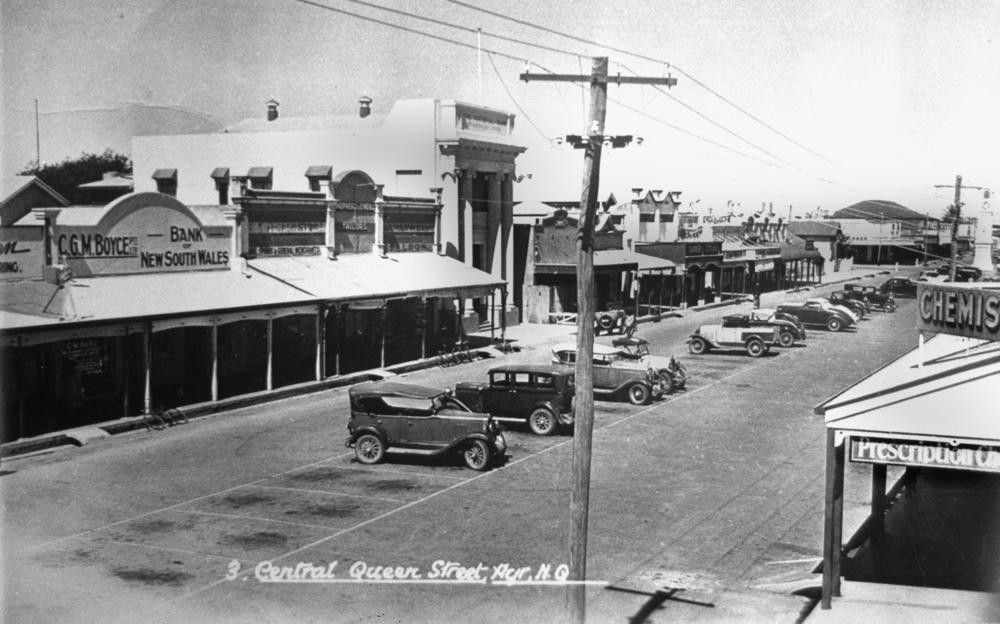
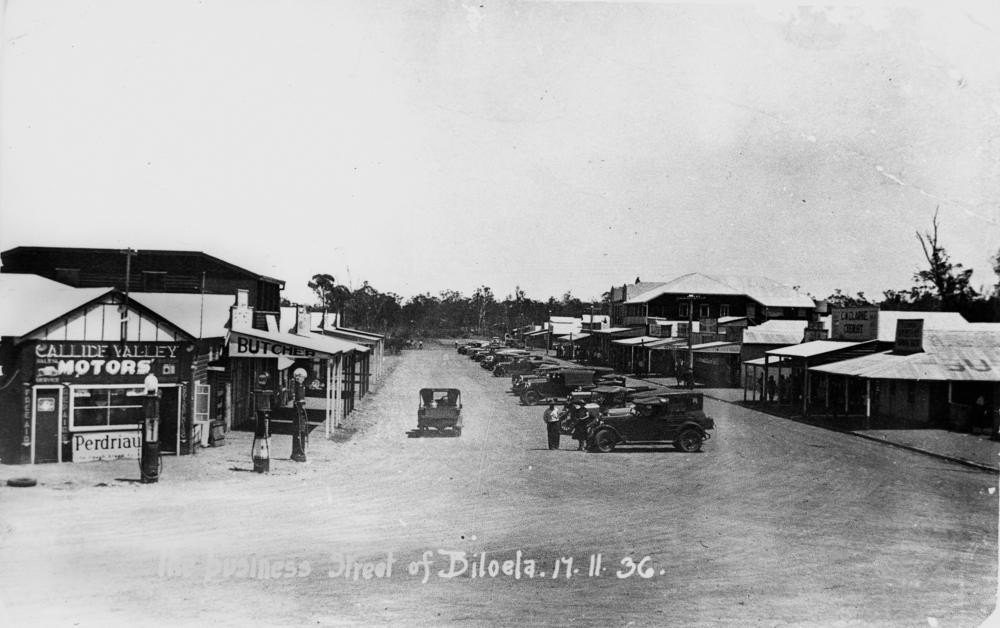
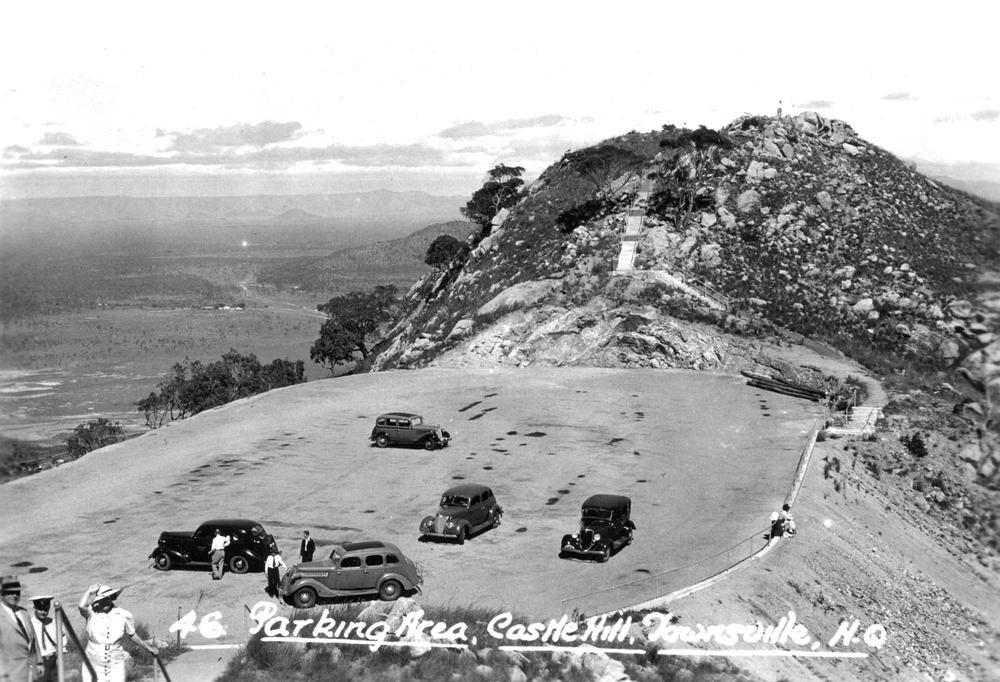
Outlook over the carpark on top of Castle Hill, Townsville, ca. 1936, John Oxley Library, State Library of Queensland Neg: 204556
Various methods of parking were tried in Queensland towns in the 30s and 40s, some more successfully than others. This letter published in the Western Star and Roma Advertiser on May 16 1941 compares the parallel parking system in Roma unfavourably with other systems.
Sir,—As a visitor to your town, I have been surprised to note the action taken by the authorities with reference to the street parking of cars. That some control not only over the parking but also of the running of cars is called for goes without saying, but the method of parking which has been instituted is possibly the worst possible form that could have been instituted in a. town the size of Roma. To successfully park a car parallel to the footpath in a confined space, when other cars occupy the spaces immediately at the front and rear, calls for the driving of an expert, and is quite beyond the capacity of the ordinary driver, as also is the matter of getting the car out again without loss of duco either to one's own car or of that of the other fellow.
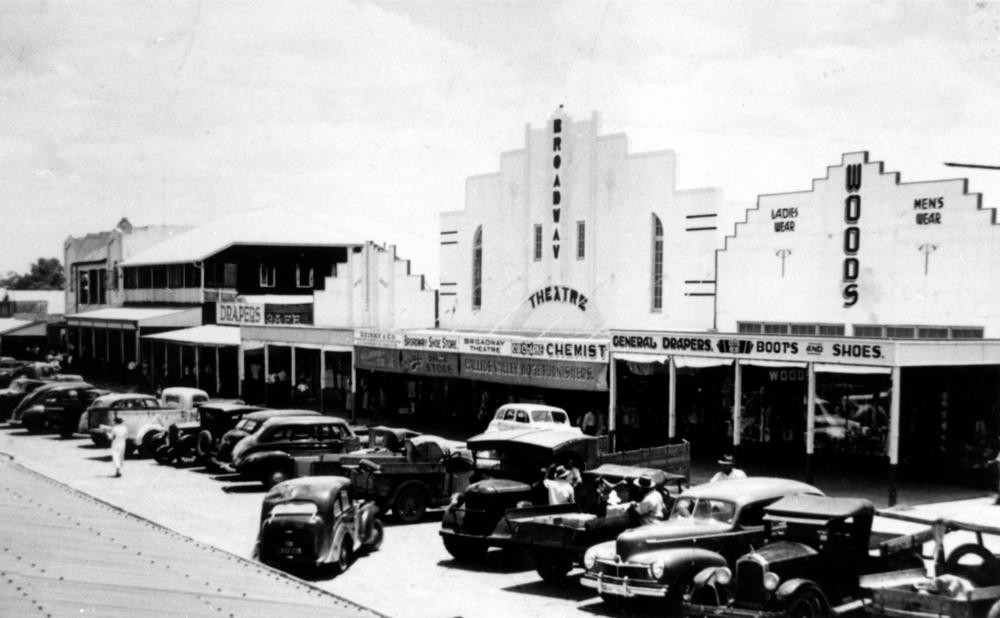
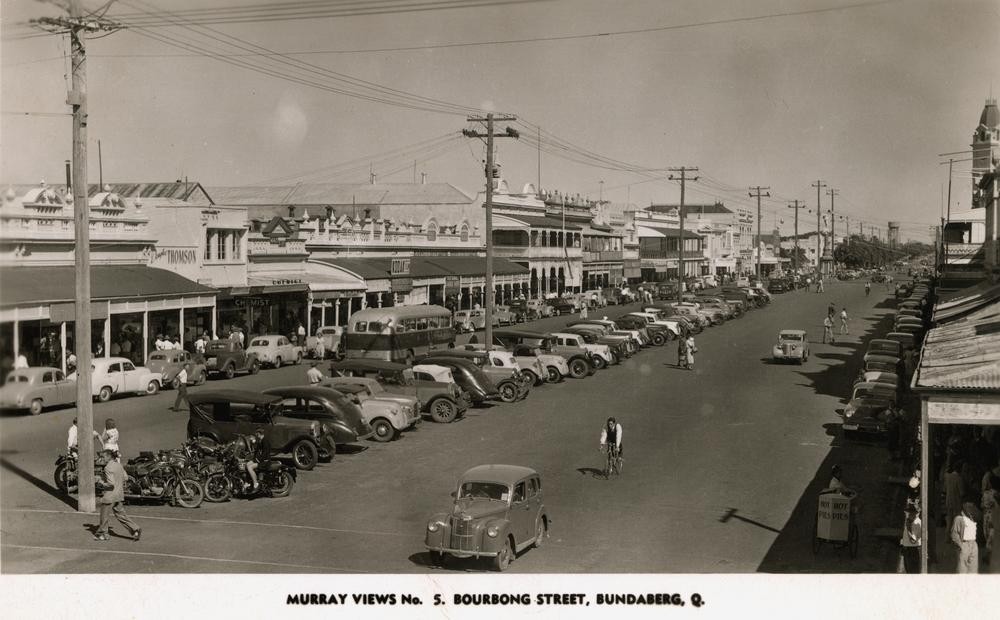
Looking more effective on a wider Bourbong Street, Bundaberg, ca. 1951, John Oxley Library, State Library of Queensland Image number: TR1867-0001-0034
Towards the end of the 1950s a new development began in Brisbane which would transform shopping and parking for Queenslanders. The rise of the shopping mall began with the construction of a new shopping centre in Chermside. The new development is described in some detail in The Cumberland Argus (Parramatta, NSW) on 1st May 1957.
This centre, which is now almost completed, is the first of several contemplated by the firm of Allen and Starke, owners of a large department store in the Brisbane City Centre. The firm is negotiating for sites in three other locations on the outskirts of urban development in areas of fairly scattered housing. Development on these other sites has not yet been approved by Brisbane City Council.
Attention is given to the parking arrangements for the new centre.
A parking ratio of 4 sq.ft. to 1 sq. ft. of floor space is considered desirable, and the first stage provides for 750 vehicles with provision for expansion of parking space to accommodate 2,000 vehicles, which with a four-fold daily turnover, will provide total accommodation for 8,000 vehicles. … The whole of the parking area is to be paved and planted with trees, which will also be planted along the boundaries of the site.
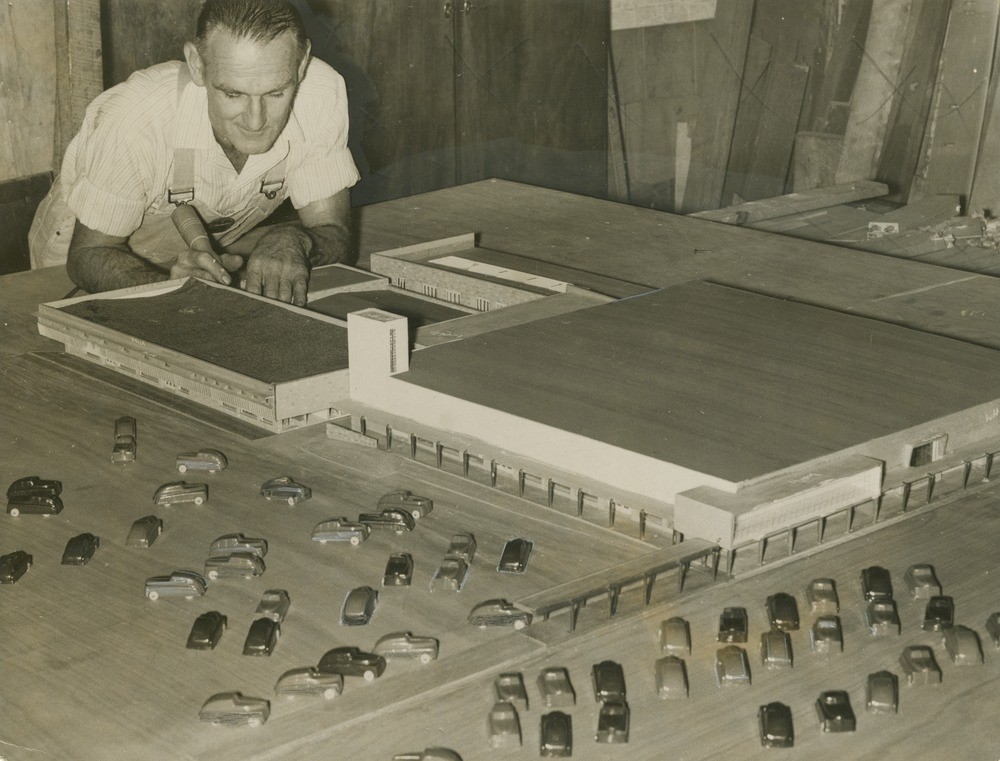
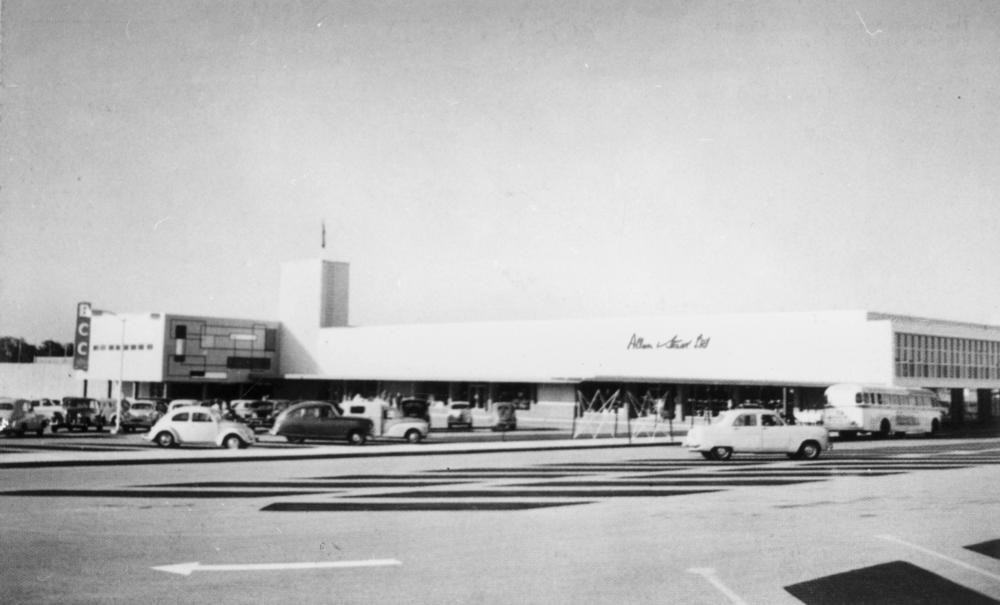
Chermside Shopping Centre, ca. 1957. Some of the cars even look like the ones in the model, John Oxley Library, State Library of Queensland Neg: 119385
The 1950s also saw the rise of multi-level car parking. The roof top car park on the R.A.C.Q. building in Fortitude Valley was the first of its kind in Australia.
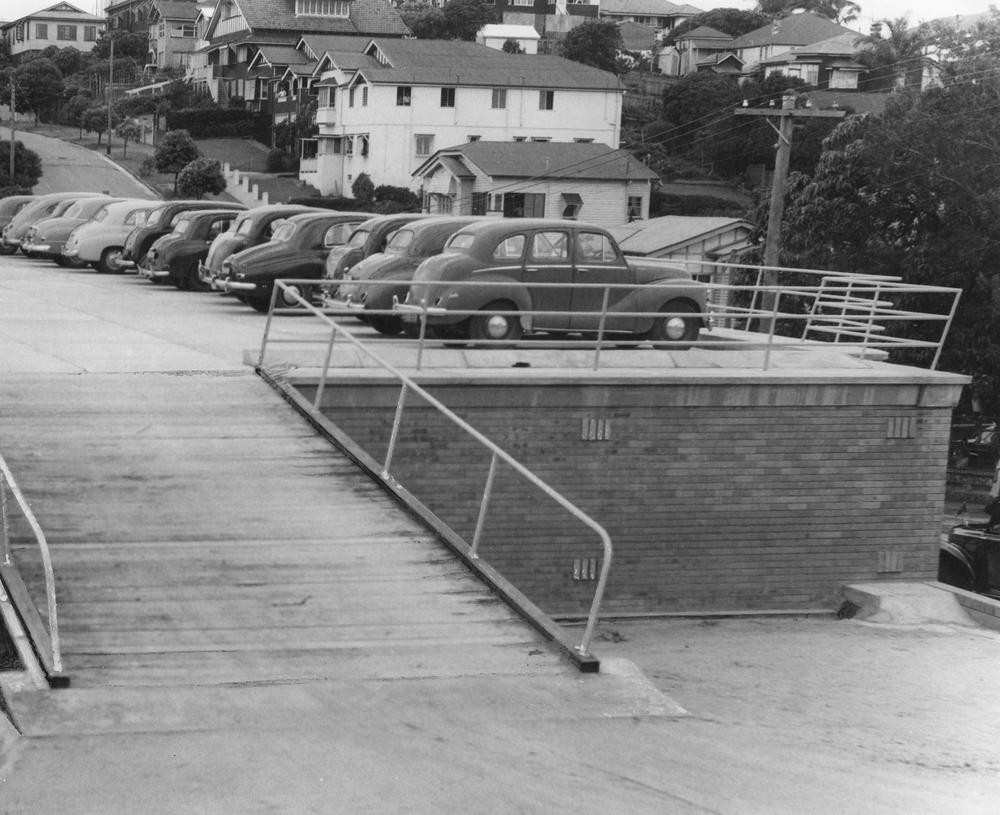
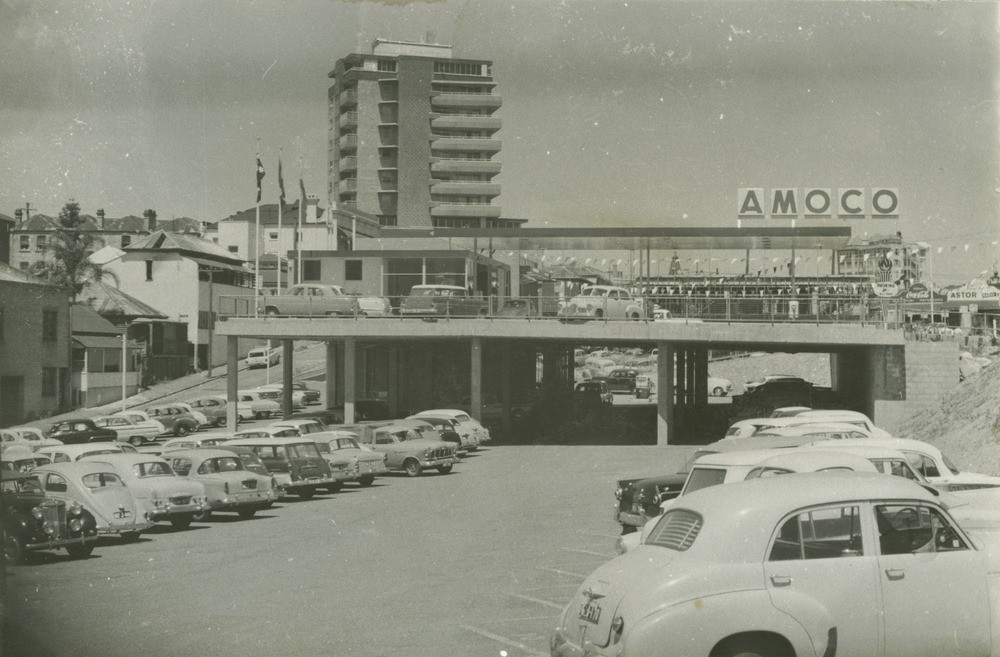
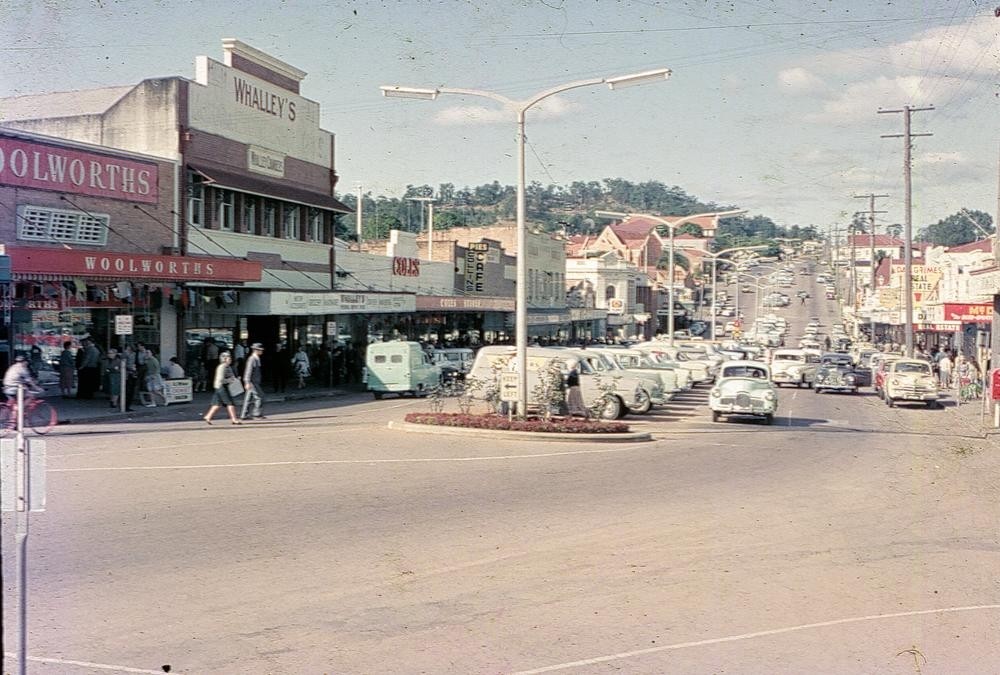
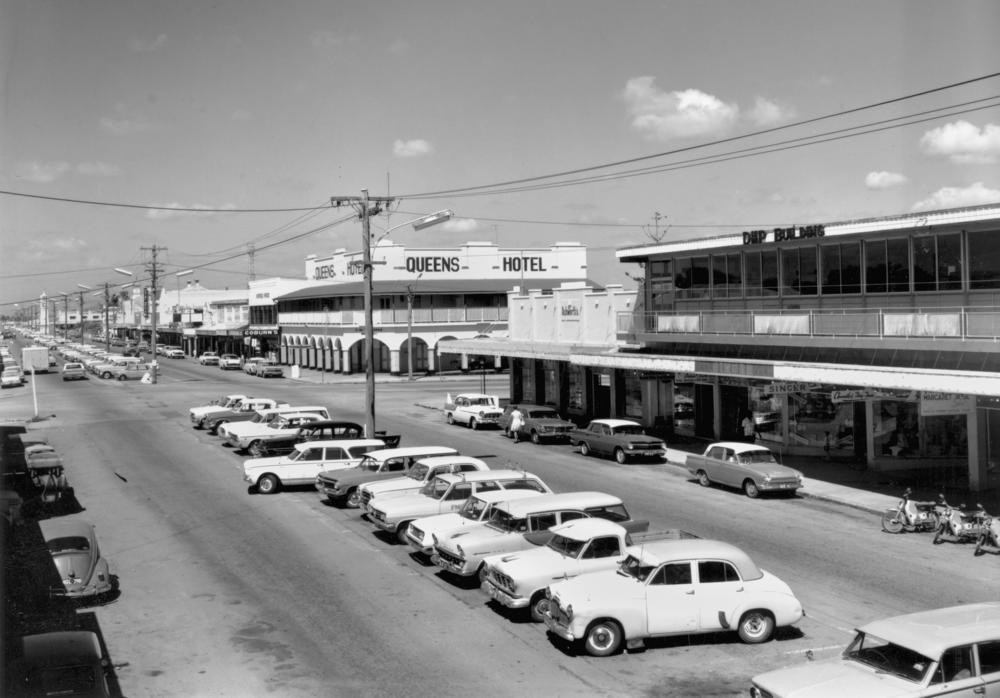
We return to Queen Street, Ayr, this time in 1967, Burdekin Library, Image number: bur00110
No survey of car parking in Queensland would be complete without mention of that innovative combination of car parking and entertainment that was the drive-in movie. First introduced to Queensland in the late 1950s, drive-ins proliferated through the 60s and 70s before all but disappearing again by the present day. Sadly the only pictures we have of drive-ins were taken during the day when they were empty of cars. This drive-in at Waterford West was brand new in 1974.
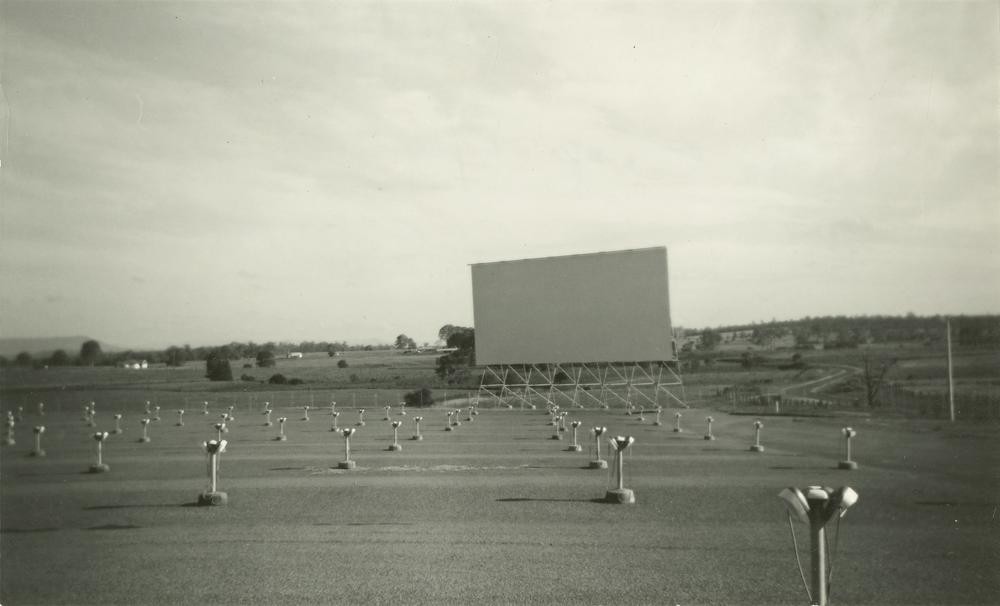
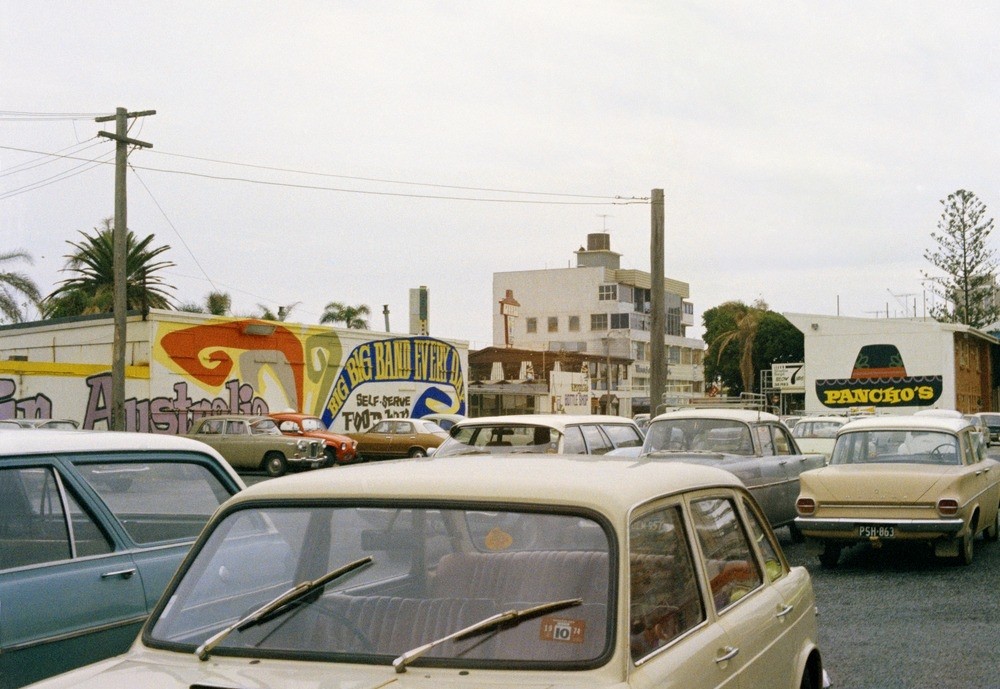
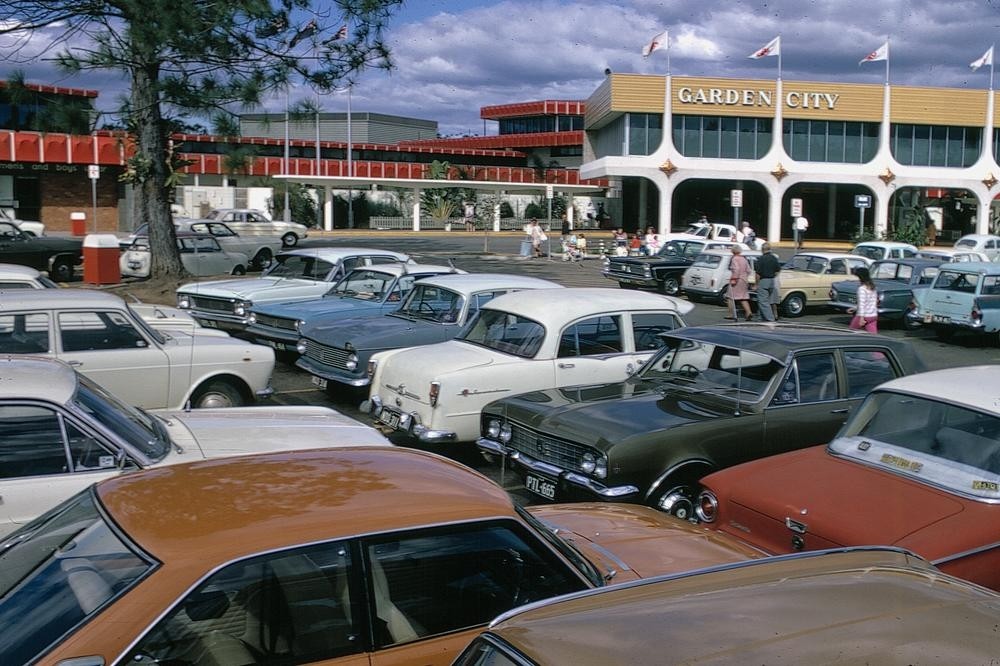
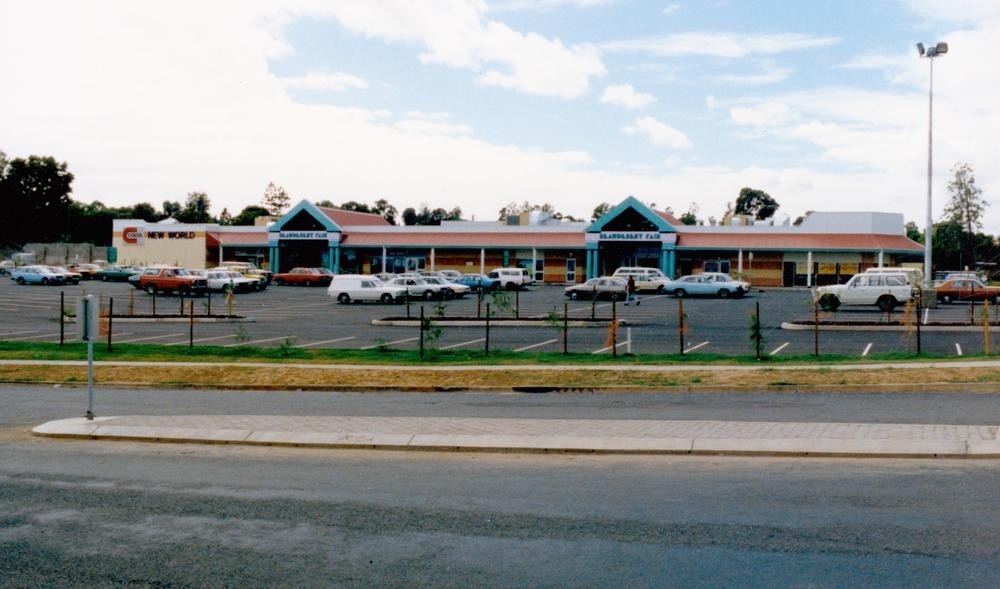
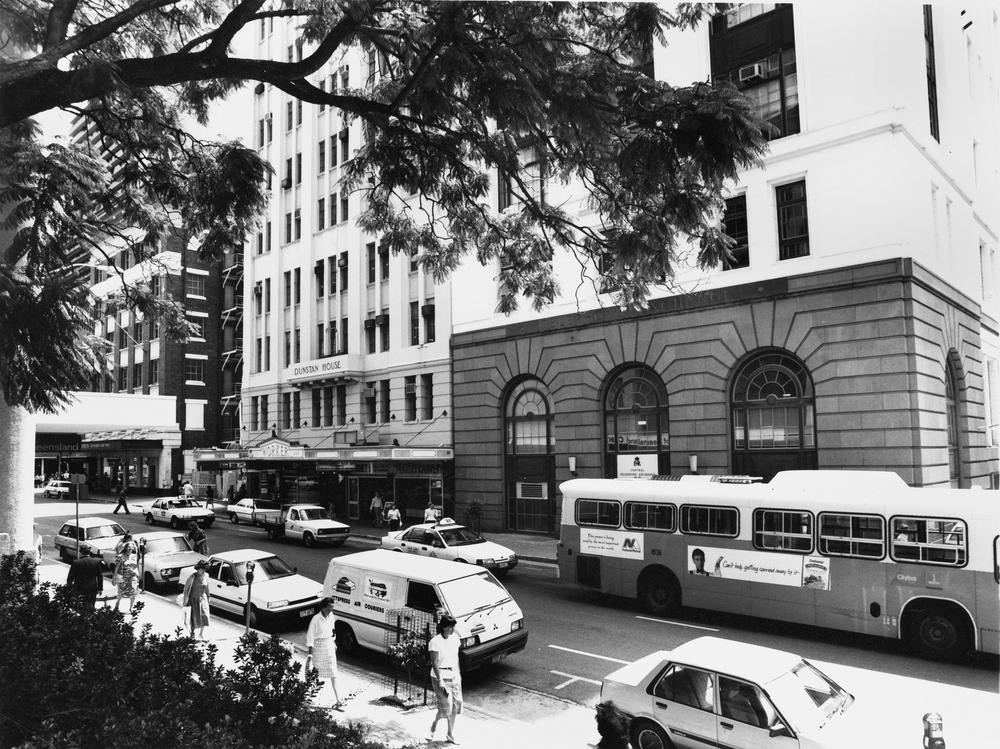
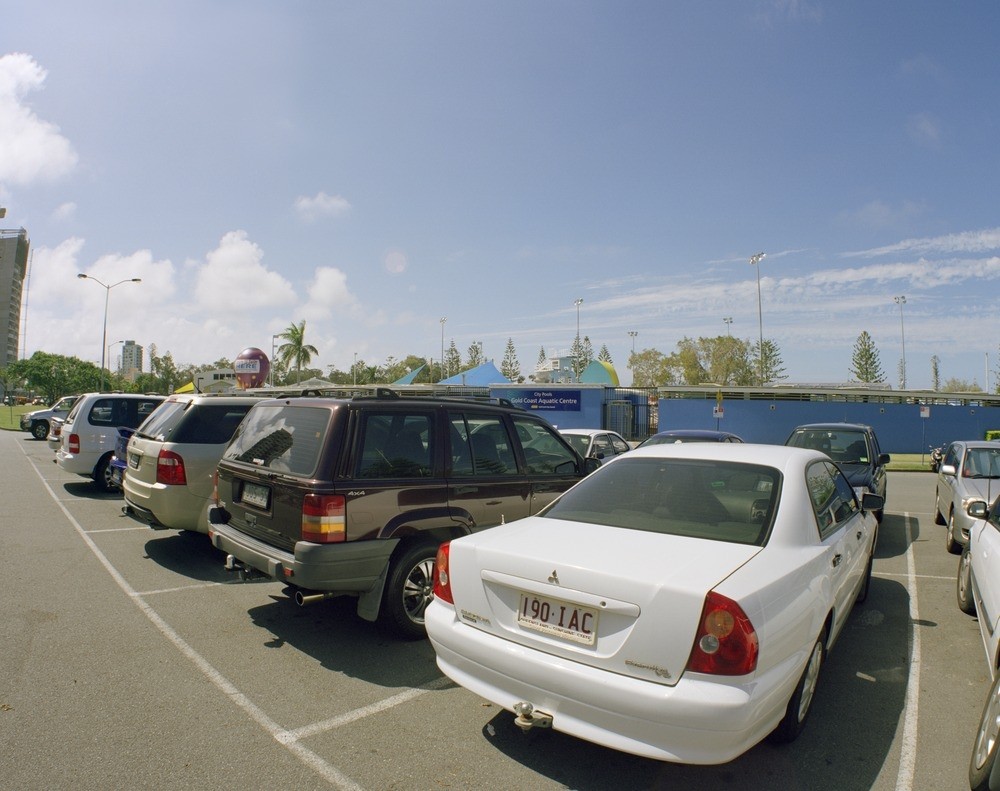
Gold Coast Aquatic Centre carpark at Southport, Queensland, 2010-2013, John Oxley Library, State Library of Queensland Image number: 29348-0001-0056
Finally here is a mystery for the eagle-eyed car experts among you. This photograph is listed in our catalogue as dating from 1959 but even those only moderately versed in the history of motor cars will realise that this must be a later photograph. Who can give us a correct date for this well stocked car park at Eagle Farm?
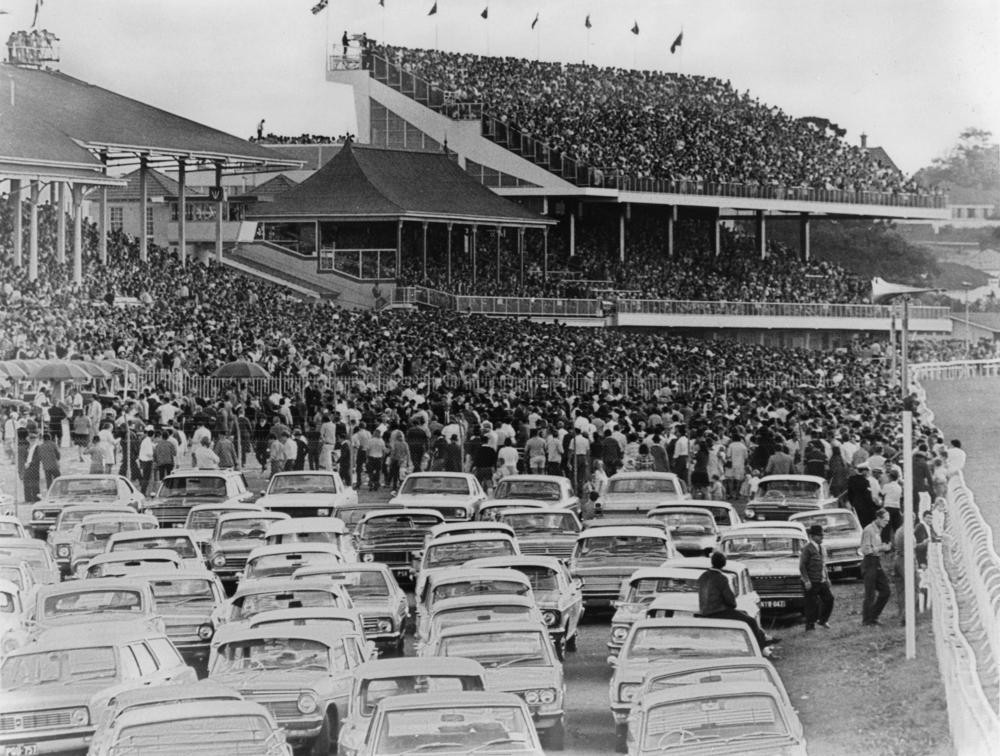
Comments
Your email address will not be published.
We welcome relevant, respectful comments.